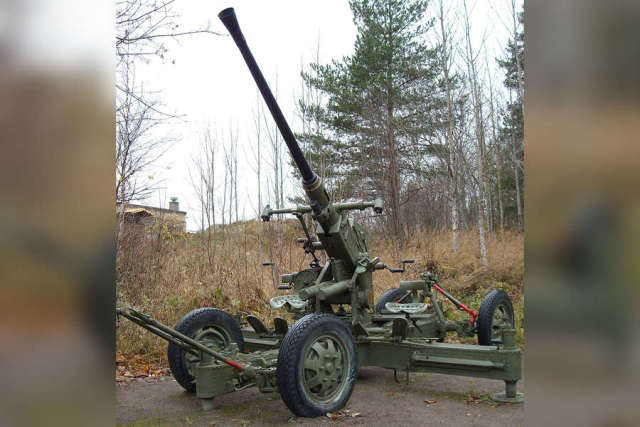Why does Kiev need Swedish anti-aircraft guns from the Second World War
In the units of the Armed Forces of Ukraine, according to a number of Western and Ukrainian media, there were anti-aircraft automatic guns Bofors L60, developed in 1932 by the Swedish company AB Bofors. Military observer of the Newspaper.En" Mikhail Khodarenok figured out how these guns could be used during the armed conflict in Ukraine.
The Bofors L60 40 mm automatic anti-aircraft gun (AZP) developed by AB Bofors at one time became a truly legendary and best-selling product of this Swedish concern. As of 1939, the company exported Bofors L60 to 18 countries and concluded licensing agreements with 10 more countries. In the end, this AZP was in service with more than 75 countries.
The AZP uses a high-explosive fragmentation projectile weighing 0.907 kg, which leaves the barrel at a speed of 881 m/s. The weight of the gun in combat position reaches 1981 kg, and the length of the barrel is 2990 mm. The gun has a practical ceiling of about 3800 m, with a range of more than 7160 m. The rate of fire of the Bofors L60 was about 120 rounds per minute.
At the beginning of its production, the Bofors L60 automatic anti-aircraft gun was equipped with a modern aiming system at that time. The horizontal and vertical gunners had reflex sights, the third member of the crew was behind them and worked with a mechanical computing device.
During the Second World War, the Bofors L60 was considered the best anti-aircraft gun in the US Navy. It turned out to be the most effective means of combating Japanese aviation, in particular, against kamikaze aircraft. One direct hit from a 40 mm fragmentation shell was enough to hit any Japanese aircraft used as a flying bomb.
However, despite all its glorious combat biography, the time of the Bofors L60 anti-aircraft automatic gun has irrevocably passed and it is unlikely that the supply of this gun will seriously strengthen the combat capabilities of the armed forces of Ukraine.
In this regard, it is advisable to consider how the Ukrainian military can use their Bofors L60. To this end, first we need to analyze the experience of using small-caliber anti-aircraft artillery in previous recent military conflicts.
During the Soviet-Afghan war, in the conflicts in Libya and Syria, anti-aircraft automatic guns, as a rule, were rarely used for their intended purpose - shooting at air targets, and were mainly used to hit ground targets.
Their high accuracy and rate of fire were used to enhance the firepower of motorized rifle units. The main targets of destruction in this case were enemy firing points equipped with machine guns, including large-caliber ones.
For example, during the fighting in Afghanistan, enemy firing points were located in specially equipped caves on the upper tiers of mountains or in mud-brick buildings. Anti-aircraft guns were used to suppress them by Soviet troops. In some cases, the task of anti-aircraft automatic guns was to destroy lightly armored enemy objects. Anti-aircraft guns were most actively used in this way during the civil war in Libya.
There is every reason to believe that the Ukrainian military will use their automatic anti-aircraft guns Bofors L60 in the same way.
As for the Bofors L60 firing at modern air targets, it is unlikely that it will be effective.
But even in shooting at ground targets, the effectiveness of this type of AZP will be relatively low due to the small caliber and relatively small high-explosive impact of a 40-mm projectile. So, in Afghanistan, Soviet troops used a 57-mm caliber AZP to destroy ground targets, and this gun has a significantly higher projectile efficiency than the 40-mm Bofors L60 cannon projectile.
The opinion of the author may not coincide with the position of the editorial board.
Biography of the author:
Mikhail Mikhailovich Khodarenok is a military columnist for the newspaper.Ru", retired colonel.
He graduated from the Minsk Higher Engineering Anti-Aircraft Missile School (1976), the Military Air Defense Command Academy (1986).
Commander of the S-75 anti-aircraft missile division (1980-1983).
Deputy Commander of the anti-aircraft missile regiment (1986-1988).
Senior Officer of the General Staff of the Air Defense Forces (1988-1992).
Officer of the Main Operational Directorate of the General Staff (1992-2000).
Graduated from the Military Academy of the General Staff of the Armed Forces of Russia (1998).
Columnist of "Nezavisimaya Gazeta" (2000-2003), editor-in-chief of the newspaper "Military-Industrial Courier" (2010-2015).
Mikhail Khodarenok


